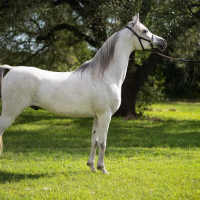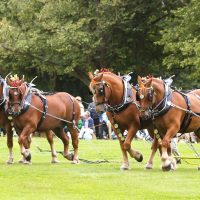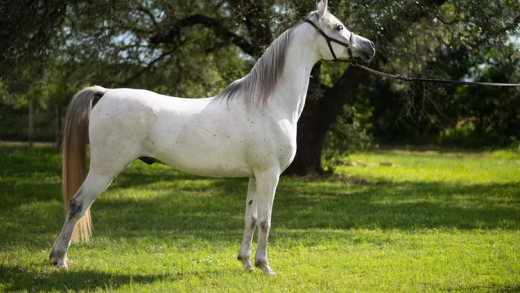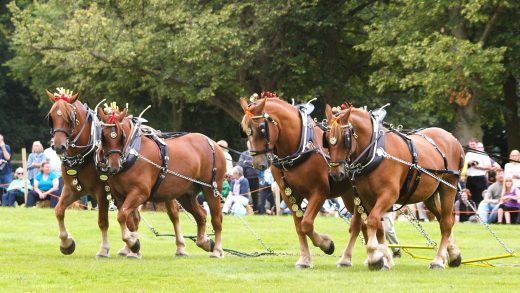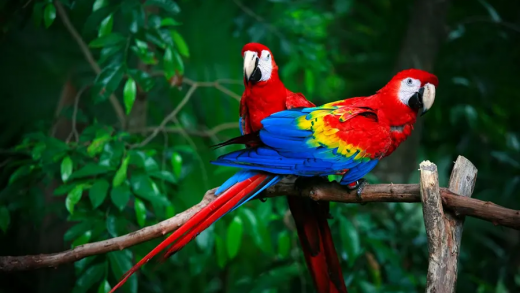Table of Contents
Introduction
In animal history and culture, the Arabian horse is revered for its grace, endurance and breathtaking beauty. With a 5,000-year history, the Arabian breed has not only been essential to the evolution of other horse breeds but has also come to represent quality and legacy in the equestrian community. This article explores the Arabian horse’s long history, unique traits and continuing significance.

Quick Facts
| Name | Arabian horse |
| Origin | Middle East |
| Size | 57 to 61 inches 800 to 1,000 pounds |
| Lifespan | 25 to 30 years |
| Coat | Bay, Black, Chestnut, Gray and Roan |
| Temperament | Intelligent, Spirited and Willing |
| Exercise Needs | High |
| Health Issues | breathing problems and Dental problems |
| Grooming Needs | medium |
| Price | $5,000 to $100,000 |
History
Ancient Origins
The Arabian Peninsula which is known for its arid environment and rough terrain is where the Arabian breed originated. Based on historical data, the breed is among the oldest horse breeds in the world having existed for over 4,500 years. The earliest recorded breeders of Arabian breed were nomadic Bedouin tribes living on the Arabian Peninsula. The endurance, speed and loyalty of the horses were highly prized by these tribes because they were essential for their survival in the desert.
Influence on Other Breeds
The influence of the Arabian breed is felt well beyond its homeland. Arabian breed were introduced to new areas by traders and adventurers who carried the breed with them across continents. Many contemporary horse breeds such as the American Quarter Horse, the Andalusian and the Thoroughbred owe a great deal to their Arabian ancestry. Due to the genetic contribution of the Arabian, these breeds now have greater speed, agility and endurance cementing the Arabian’s legacy in the world of horses.
Historical Significance
Arabian breed have long been honored in art, literature and mythology. Ancient civilizations including Egypt, Greece and Rome held them in high regard. The Prophet Muhammad also stressed the Arabian horse’s significance in Islamic culture enhancing its dignity. The breed’s historical significance is demonstrated by its frequent appearance in ancient artefacts, texts and paintings.
learn about Savannah Cats: A Comprehensive Overview in 2024
Features
Physical Characteristics
The physical characteristics of the Arabian breed make it readily recognizable. It features small, curled ears, big expressive eyes and a sophisticated head with a dished profile. The breed has a small muscular physique with a beautifully arched neck. The Arabian horse high tail carriage which enhances its regal aspect is one of its most distinctive features.
Strength and Endurance
Arabian breed are known for having extraordinary stamina and endurance. For transportation, battle and survival, the Bedouin tribes found them vital due to their capacity to traverse great distances without experiencing weariness. Arabian breed are a common sight in contemporary endurance riding contests where their unparalleled performance in demanding environments is demonstrated.
Characteristics
Arabian breed are prized for their intellect, empathy and close relationship to people. They make adaptable companions for a variety of equestrian pursuits since they are gentle yet lively. Horse lovers all throughout the world have grown to love them because of their loyalty and readiness to please.
Coat Colours
The coat colors of Arabian breed range from bay to grey to chestnut to black and roan. Even though these hues are popular, the breed is most closely linked to the grey coat. Arabian horses have a distinct shine and silky coat texture that add to their overall elegance, regardless of colour.

learn about The Best Breeds of Dogs for Families with Children in 2024
Significance
Heritage Cultures
The Middle East’s cultural legacy is closely linked to the Arabian horse. The breed is revered as a national asset and a source of pride in many Arabian nations. The Arabian horse’s legacy has been preserved for decades by the Bedouin tribes’ careful breeding methods and commitment to maintaining the breed’s integrity. As a live link to the rich heritage of the area, Arabian horses are honoured in festivals, parades and cultural events nowadays.
Role in Modern Equestrianism
Arabian breed have influenced modern equestrian culture profoundly. They can be used in a variety of disciplines such as dressage, show jumping, endurance riding and pleasure riding because to their adaptability. They are well liked for competitive events due to their grace, agility and responsiveness. Nevertheless, they are also great for recreational riding and therapeutic programs because of their kind disposition.
Breeding as well as Conservation
The creation of specialised breeding programs and registries is the result of efforts to maintain the purity of the Arabian horse and highlight its distinctive traits. Breed standards are upheld, ethical breeding methods are encouraged and the welfare of Arabian horses is guaranteed globally by organisations like the Arabian Horse Association (AHA) and the World Arabian Horse Organization (WAHO). These groups also arrange functions and contests that honour the superiority of the breed and give enthusiasts a venue to display their horses.
Economic Impact
The equestrian world is greatly impacted financially by the Arabian horse industry. Arabian horse events sales and auctions bring in a sizable sum of money and draw participants and viewers from all over the world. The popularity of the breed has also fueled the expansion of associated businesses including equestrian tourism, breeding farms and horse instruction. Due to the Arabian horse’s widespread appeal a thriving community of breeders, trainers and lovers has developed all of whom support the breed’s ongoing prosperity.
Endurance Events
These tests of horse endurance over difficult terrain have grown to highlight the remarkable resiliency and stamina of Arabian horses. The domination of Arabian horses in endurance contests is one of their greatest achievements to the equestrian world. Its status as the breed of choice for endurance riding events stems from its innate propensity to perform well in these events which has further cemented the breed’s importance in the equestrian world.

Conclusion
The Arabian horse is a true equine icon due to its long history, distinct qualities, and profound significance. The Arabian horse has a tradition of perfection and enduring beauty, dating back to its ancient beginnings in the Arabian Peninsula and influencing modern horse breeds around the world. Its exceptional endurance, intelligence and mild temperament have won over generations of horse fans and its cultural and economic legacy continue to affect the equestrian environment.
When we celebrate the Arabian horse, we appreciate not only its contributions to equestrianism but also the enduring link between humans and horses. The Arabian horse’s narrative demonstrates the strength of committed breeding, the tenacity of a great breed and the lasting impact of one of history’s most cherished and revered horses.
People also read about Chug : Best Compact Companion in 2024?




